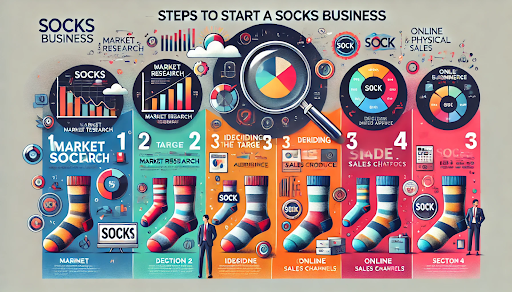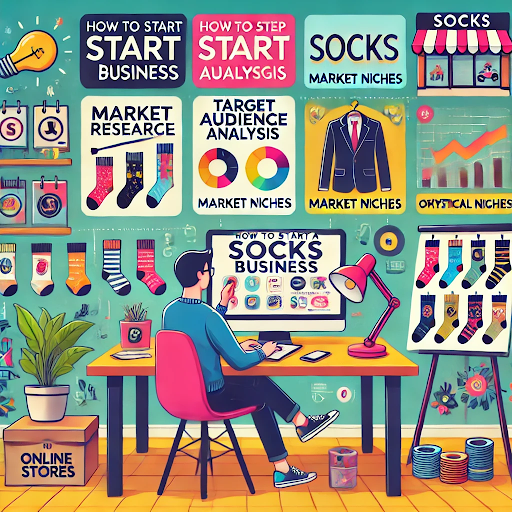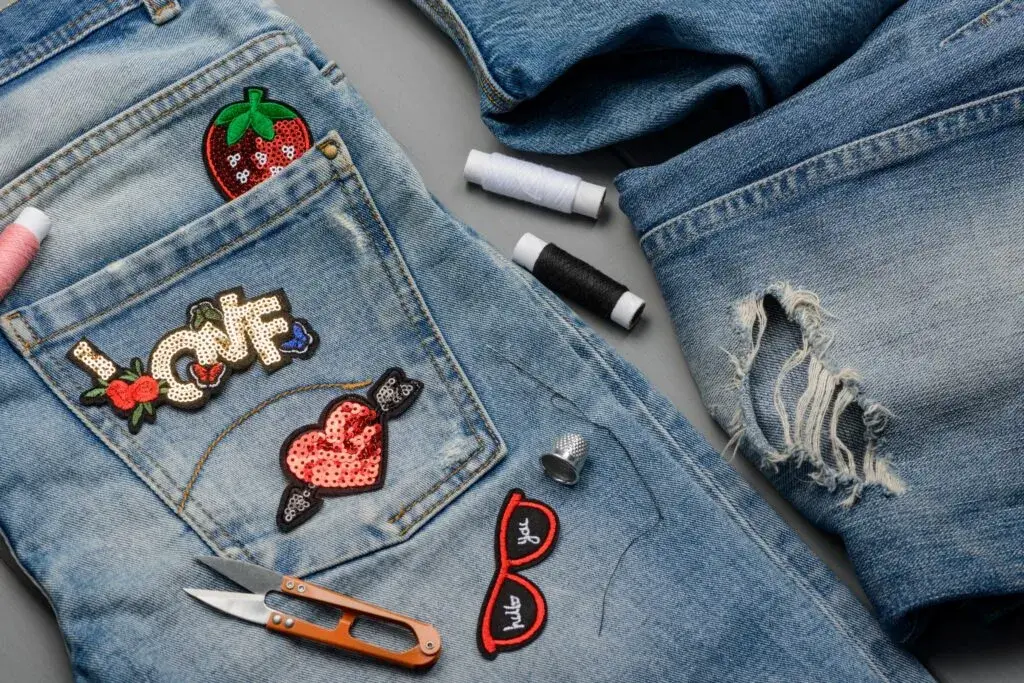How To Start a Sock Business
Starting a business can feel overwhelming, especially when many industries are highly competitive and difficult to break into. It’s easy to start thinking that success is out of reach.
But here’s the good news—it doesn’t have to be that way.
Selling socks is an incredibly profitable and beginner-friendly business opportunity that almost anyone can pursue. Think about it: socks are worn by people of all ages. With so many styles, target markets, and use cases, you can easily find your niche in the market.
Ready to take the leap? Follow our simple, step-by-step guide on how to start your own sock business.

1. Conduct Market Research
In today’s market, price is no longer the only factor influencing consumer purchases. While it still matters, factors like brand differentiation, customer experiences, and reputation play an equally significant role in driving sales.
Conducting market research is key to understanding both your customers and the industry, giving you a better shot at success.
Start with secondary research by analyzing available market data. For the sock industry, focus on gathering key insights such as:
- The average price range for different types of socks
- Typical profit margins for sock businesses
- The best-selling sock styles
- The most effective platforms for selling socks
This data will help you spot gaps in the market, enabling you to stand out from competitors. Additionally, it will reveal trends—such as this year's top-selling socks—that can guide your product offerings to align with consumer preferences.
Next, take a deep dive into your competitors. Analyze top players in the sock industry to learn what works. Online platforms like eBay provide valuable data to track competitors' sales trends.
Here are some important areas to explore:
- The types of socks your competitors are offering
- Their sales volumes and pricing strategies
- An estimate of their profit margins
- Their advertising and promotional methods
- Their approach to customer service
Success leaves clues. By studying industry leaders, you can identify best practices and avoid common pitfalls.
2. Identify Your Target Audience and Market Niche
As a small upstart e-commerce business, it’s hard to attract everyone. Instead, it’s better to niche your store to attract a niche audience. This helps you stand out among competitors and makes your brand the go-to option for a specific niche.
91% of consumers believe they’re more likely to shop with brands that provide relevant offers. For example, creating only socks with pet graphics attracts pet lovers who obsess over anything revolving around animals.
When picking your niche, it’s best to look for underserved markets that other sock businesses neglect. For example, maybe you’ve found that toddlers need non-slip socks or patients need compression socks.
You can also browse on Etsy to get an idea of what types of socks are selling. Pick a niche that resonates with your passions and has a high demand.
Once you know the market you want to sell to, start conducting primary research to learn more.
For example, perform surveys on customer preferences. See what types of socks your potential customers would like and their preferred colors and fabrics. Also, look through all the positive and negative customer reviews from other businesses. What are customers in this niche complaining about? Can you win them over with faster delivery, better quality socks, better packaging, or lower costs?

3. Establish the Type of Socks You Want to Make
Now that you know what your customers want and what niche you want to enter, you can decide on the type of socks to sell.
You’ll want to choose the sock types, designs, fabrics, decorative patterns, branding styles, and colors based on your research.
Before you choose your type, we recommend looking at the types of socks that sell best. For example, if you type in “socks” on the Etsy search bar, you’ll get recommendations such as:
- Socks with faces
- Socks monkey
- Wool socks
- Women’s patterned socks
As a beginner, it’s better to sell trendy styles of socks. If you go with an obscure sock type, you risk drawing little interest. Make a list of the types of socks you want to sell, then narrow the list based on your passion for them and whether you can find a manufacturer to make them for you.
4. Build Your Brand
With your product finalized, it’s time to focus on building your brand. Your brand is more than just visuals like logos, website design, or color schemes—it’s the entire perception customers have of your business. This includes your mission, values, and tone of voice, all of which should resonate with your target audience.
Define Your Brand Position
Start by determining your brand position, which defines how you want to be perceived in the market. Remember, you can’t be everything to everyone—for example, you can’t position yourself as both a luxury socks brand and a budget-friendly option. Craft a brand positioning statement that clearly communicates who you are and what you do. For instance: "We are a premium sock company offering warm, durable wool socks designed for outdoor enthusiasts."
Create Visual and Verbal Identity
Once your position is clear, focus on building the visual and verbal elements that support it. Ensure your logo, website, packaging, and social media reflect your brand identity. A cohesive look and tone will strengthen your connection with customers.
Consistency is key—apply your brand elements across every touchpoint, from your website and ads to your packaging and emails..
5. Decide Where to Sell Your Socks
Today’s e-commerce landscape offers a variety of platforms for selling your products, each with its own strengths. The two primary options are creating your own online store or selling through third-party marketplaces.
Selling Through Your Own Online Store
Building your own e-commerce store gives you full control over the customer experience. While it requires effort to drive traffic, it offers several benefits
- Full control over your brand: You can fully customize your store to align with your branding. Many platforms offer templates that can be tailored with elements like chatbots or email collection forms to engage visitors
- Retargeting Opportunities: Unlike marketplaces, owning your store lets you retarget shoppers through ads, helping you build loyalty and increase conversions.
- Email list Growth: Your store allows you to collect emails, enabling you to build a direct customer base. Marketplaces typically don’t provide access to customer data.
Marketplaces are great for quickly starting sales without the need for a dedicated website. Examples of marketplaces include eBay, Etsy, and Amazon Handmade.
Here’s why marketplaces can be advantageous:
- Ease of Setup: You don’t need to build a site from scratch; simply create product listings within existing categories.
- High Traffic Volume: These platforms attract millions of buyers who already trust the marketplace. Consumer protection policies make them comfortable purchasing from new sellers.
- Immediate Sales Potential: With well-optimized listings, you can start making sales almost immediately.
Both approaches have unique advantages, so consider a strategy that combines the benefits of each. For example, launch on marketplaces to gain early traction while gradually building your own branded store for long-term growth.
6. Pricing Your Socks
Pricing your socks can be a game of art and science. There’s no exact formula. Setting your price too high causes shoppers to abandon their carts, while aiming too low means you miss out on untapped profits.
The pricing strategy you choose depends on your product. If you sell premium socks, you may consider value–based pricing, meaning you set a price based on how much customers think your products are worth.
Sometimes, pricing higher than competitors is a smart move, especially if you offer something they don’t. Value-based pricing works for sellers with differentiating qualities, such as sustainability or better materials. In fact, 34% of people are willing to pay more for sustainable products.
If you sell the same product to customers with little differentiation, you may go with a competitor pricing strategy. This is where you charge less than other stores. However, you could be left with charging too low and fall victim to being in a race to the bottom.
7. Find a Wholesale Socks Supplier
Now, you’re ready to find a print-on-demand supplier who can meet your demands, such as design, sizes, shipping times, and costs.
We suggest going to a supplier who can offer custom services. For example, THE/STUDIO allows you to fully customize your socks. You can choose from a wide range of sock types, such as no-show, crew, quarter, and knee-high socks. Nearly anything you can imagine, THE/STUDIO can do.
From retail packaging to fabrics and everything in between, THE/STUDIO helps you craft the perfect custom socks for your customers. You can upload your own artwork or have one of our in-house designers help you.
8. Develop a Marketing and Promotion Plan
If you’ve decided to create an online store, you’ll need a marketing strategy to drive traffic to your website.
One of the quickest ways to see results is by using pay-per-click (PPC) advertising on platforms like Google, Facebook, or Instagram.
Google Ads
With Google Ads, you can target specific keywords based on your budget. For example, if someone searches for “wool socks,” your ad can appear at the top of the search results. You’ll pay a small fee for each click, driving interested shoppers directly to your store.
Social Media Ads
Social media ads work differently by showing your promotions directly in users’ timelines or feeds. Instead of targeting keywords, you can focus on demographics and interests. For instance:
- Selling pet-themed socks? Target pet lovers.
- Selling wool socks? Aim for outdoor enthusiasts who enjoy skiing or snowboarding.
- Both methods allow you to reach your ideal customers quickly and efficiently, helping you boost visibility and grow your online store.
Frequently Asked Questions
Is Starting a Sock Business Profitable?
Yes, socks are a highly profitable business model, with the market valued at 49.80 billion in 2022 and expected growth annually by 6% from 2023 to 2028. Socks are an everyday necessity and a staple in most peoples’ wardrobes; thus, there’s always a high demand.
How To Start a Sock Selling Business?
To start a sock business, you must set up a brand and find a supplier who manufactures socks. Then, you need to promote your products online via an e-commerce store or marketplace. The most important part is to create a brand that distinguishes yourself from competitors.
Final Thoughts
Starting a sock business is one of the easiest and most lucrative ventures you could start. They’re a staple item worn daily and need to be replaced regularly.
Additionally, the market for specialty custom socks is thriving. From personalized designs featuring pets, faces, and memes to socks tailored to niche interests, there’s no shortage of opportunities to attract diverse customer bases.
If you’re ready to bring your sock business idea to life, THE/STUDIO is here to help. You can create custom-designed, retail-ready socks that will captivate your target audience and elevate your brand.
With countless ways to personalize your products,, we’re confident we’ll "knock your socks off!" Partner with THE/STUDIO today to launch your business and set yourself up for success.




